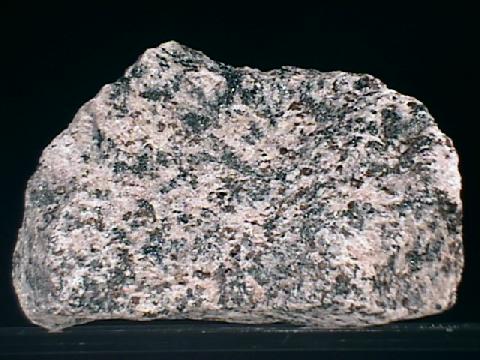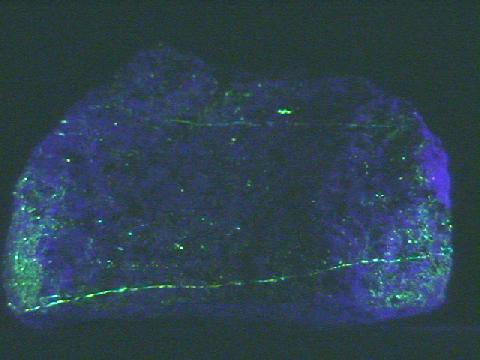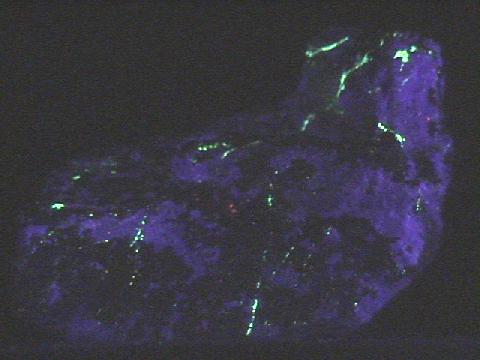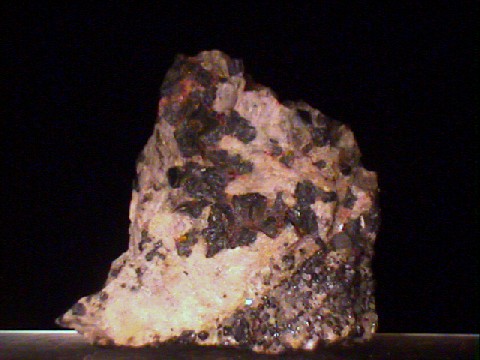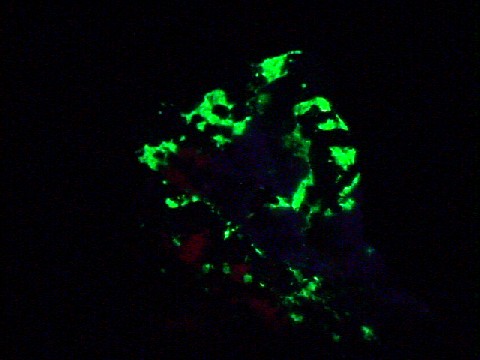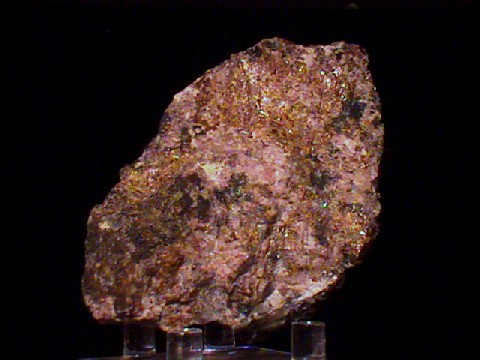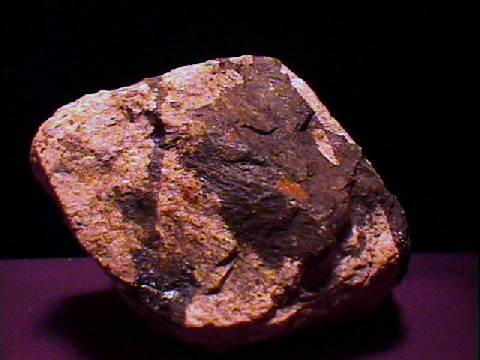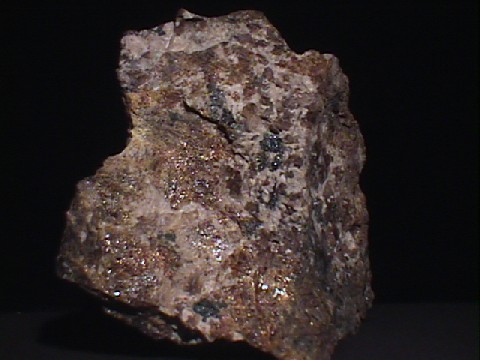
 THE
MINERAL HARDYSTONITE
THE
MINERAL HARDYSTONITE
- Chemistry: Ca2ZnSi2O7 , Calcium Zinc Silicate.
- Class: Silicates
- Subclass: Sorosilicates
- Group:
Melilite - Uses: A very minor ore of zinc and as mineral specimens.
Specimens
Hardystonite is well known to collectors of fluorescent minerals from Franklin and Sterling Hill, New Jersey. It will fluoresce a dark purple under short-wave ultraviolet light. This fluorescent color is in striking contrast to the normal color of hardystonite. Fluorescence occurs when the ultraviolet light (invisible to humans) imparts energy to some of the atoms in the mineral. This energy is converted by the atom into visible light that we can then see. Hardystonite is usually a dull, unattractive white, but under short-wave UV light it really impresses! The following table shows the more common fluorescing minerals from Franklin and Sterling Hill, New Jersey.
| Mineral: | Fluoresces: | Mineral: | Fluoresces: | Mineral: | Fluoresces: |
| Barite | white | Esperite | yellow | pale violet | |
| Calcite | red | Fluorite | Violet | Willemite | green |
| Clinohedrite | orange-yellow | Hardystonite | Violet-blue | Wollastonite | red |
These minerals are sometimes found in association with each other and can make for wonderfully colorful fluorescent specimens. The violet-blue color of hardystonite really stands out among these minerals. The combination of hardystonite, clinohedrite and willemite is considered a mineralogical classic. Hardystonite is a product of the metamorphism of zinc minerals, probably hemimorphite and/or smithsonite, that were caught up in the regional metamorphism that created the Franklin site. Hardystonite is found no where else.
PHYSICAL CHARACTERISTICS:
- Color is white to less commonly pale pink or brown.
- Luster is vitreous to dull.
- Transparency: Specimens are translucent to opaque, rarely transparent.
- Crystal System is tetragonal.
- Crystal Habits include massive and granular specimens.
- Cleavage is perfect in two directions and fair in two other directions (all prismatic).
- Hardness is 3 - 4.
- Specific Gravity is approximately 3.4+ (above average)
- Streak is white.
- Other Characteristics: Fluoresces a dark violet to blue color under short-wave UV light and no fluorescence under long-wave UV light.
- Associated Minerals include willemite, esperite, zincite, franklinite, calcite and especially clinohedrite.
- Notable Occurrence is limited to its type locality: North Hill Mine, Franklin, Sussex County, New Jersey, USA.
- Best Field Indicators are fluorescence, associations, locality and cleavage.

